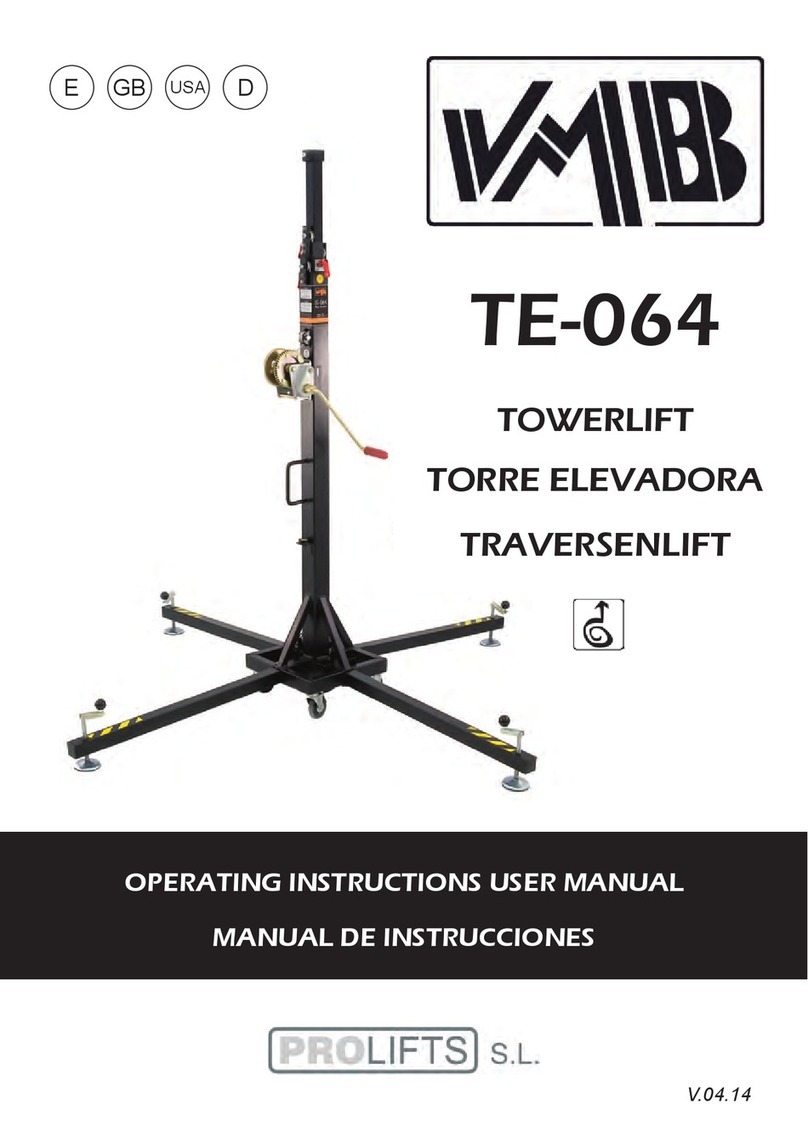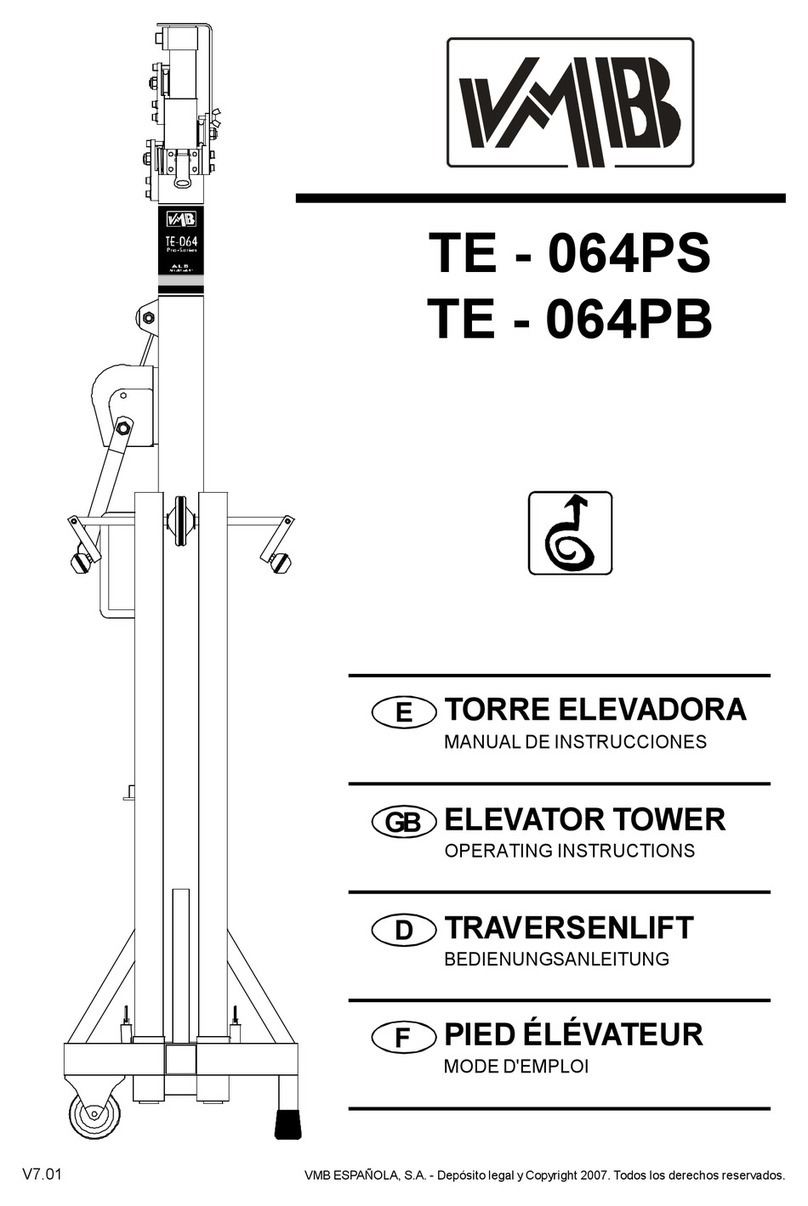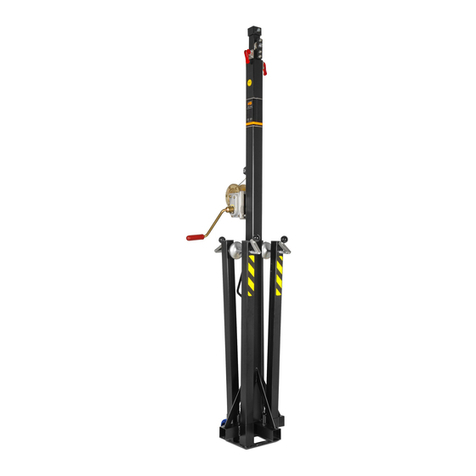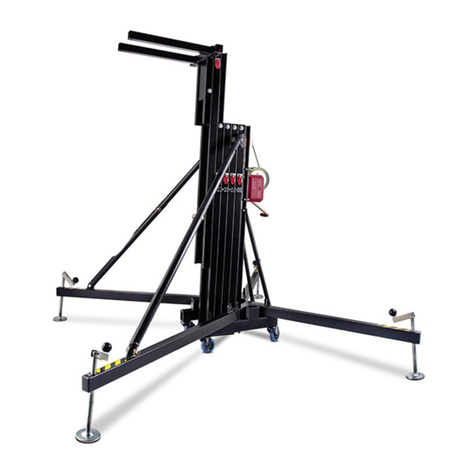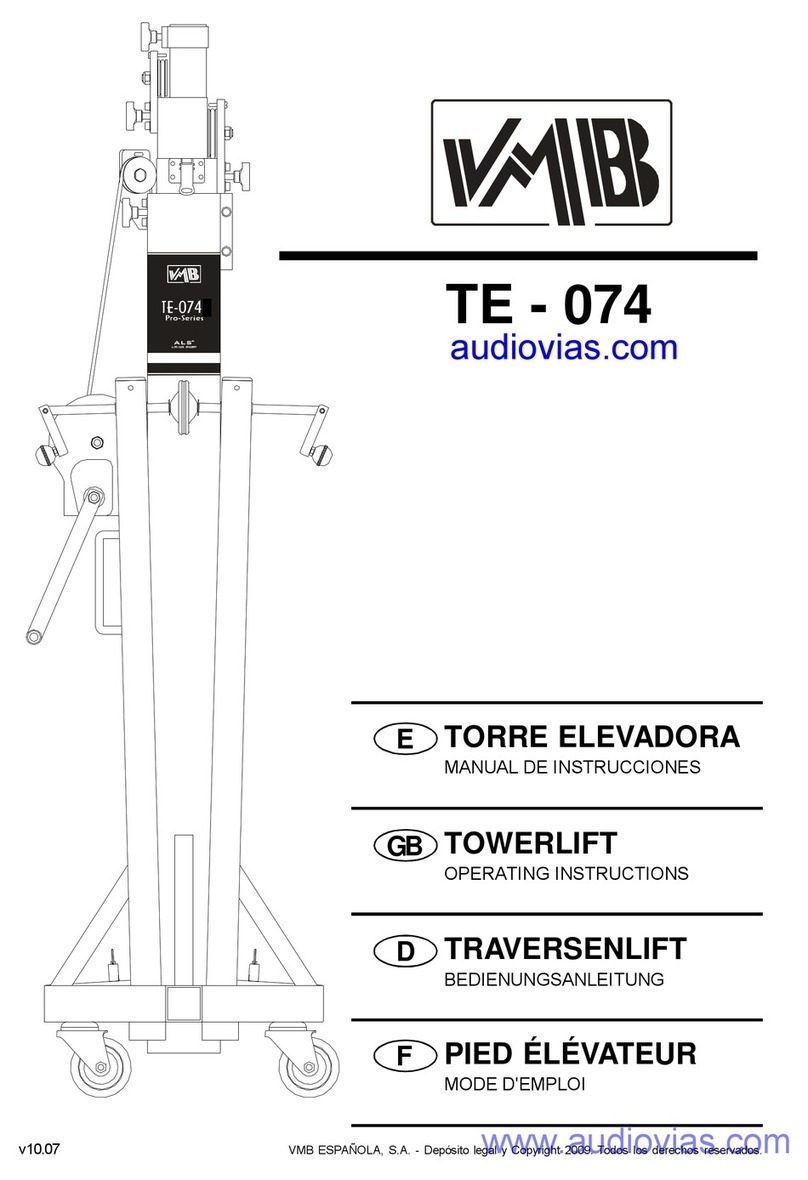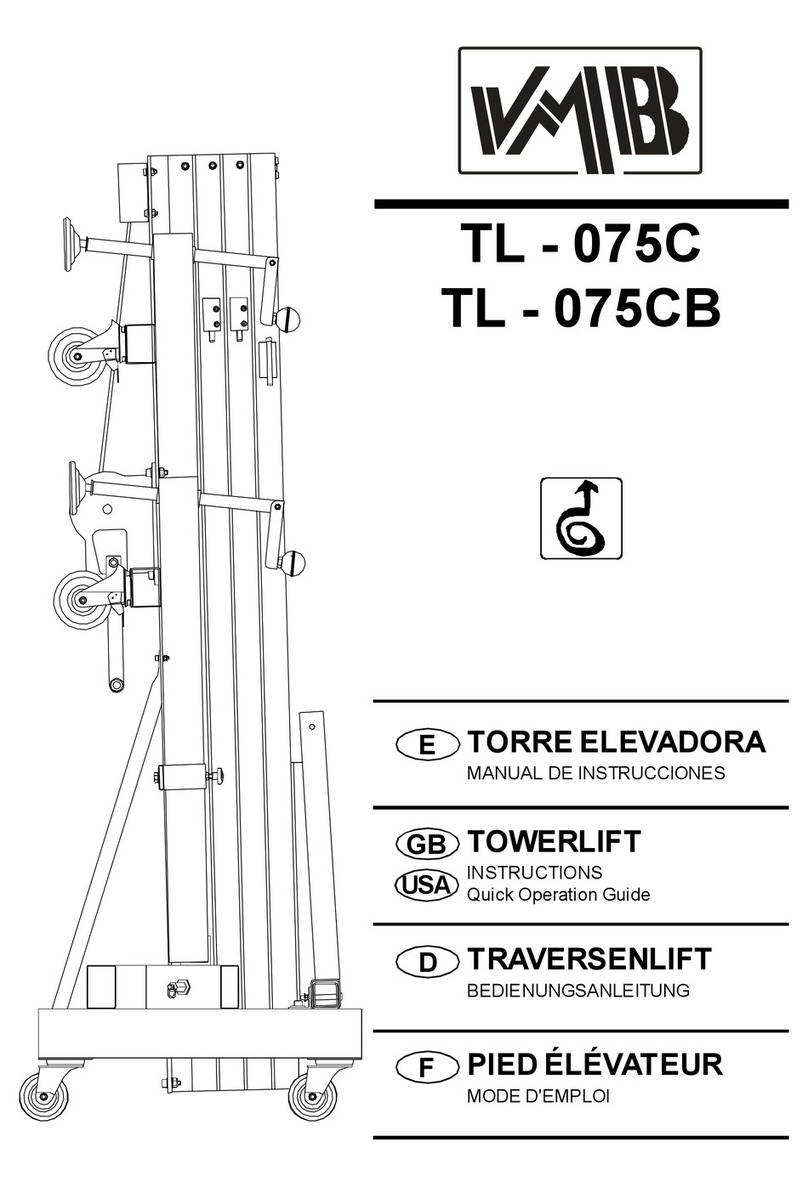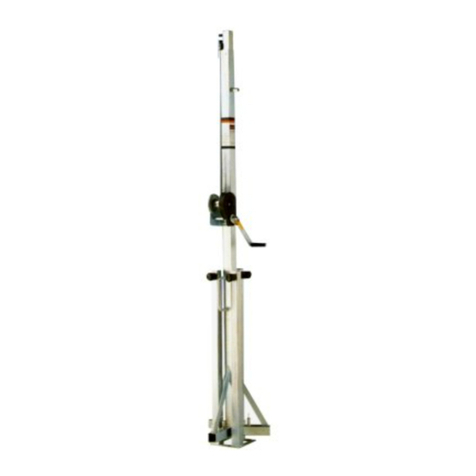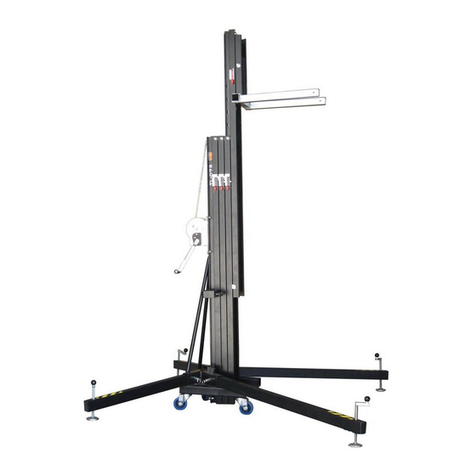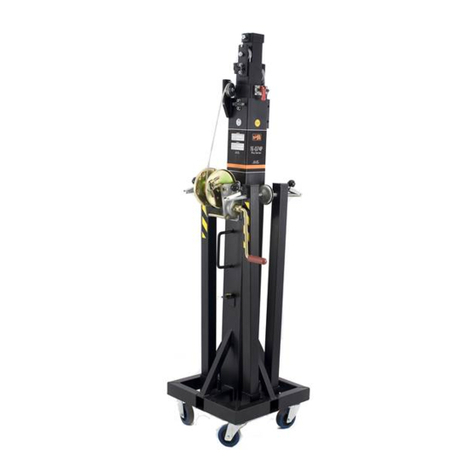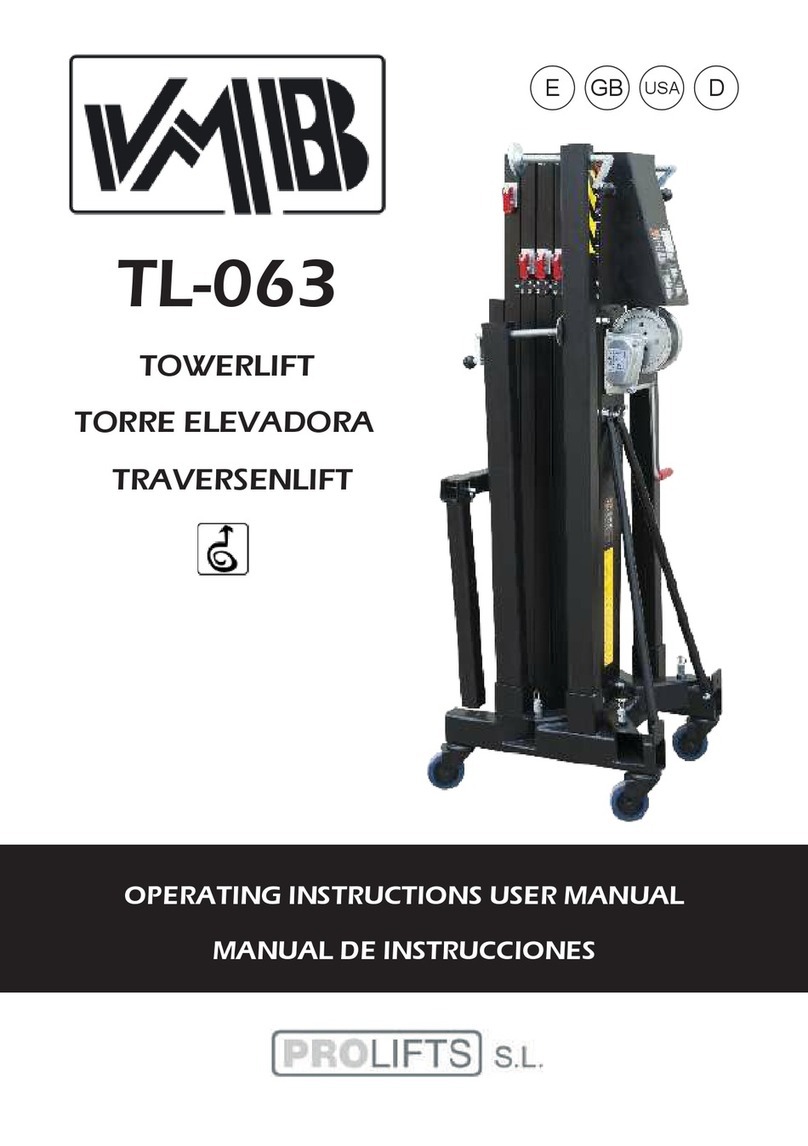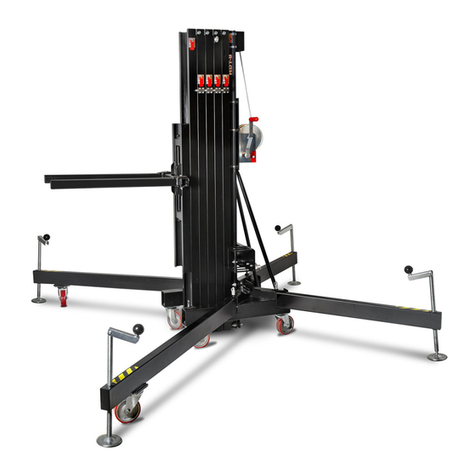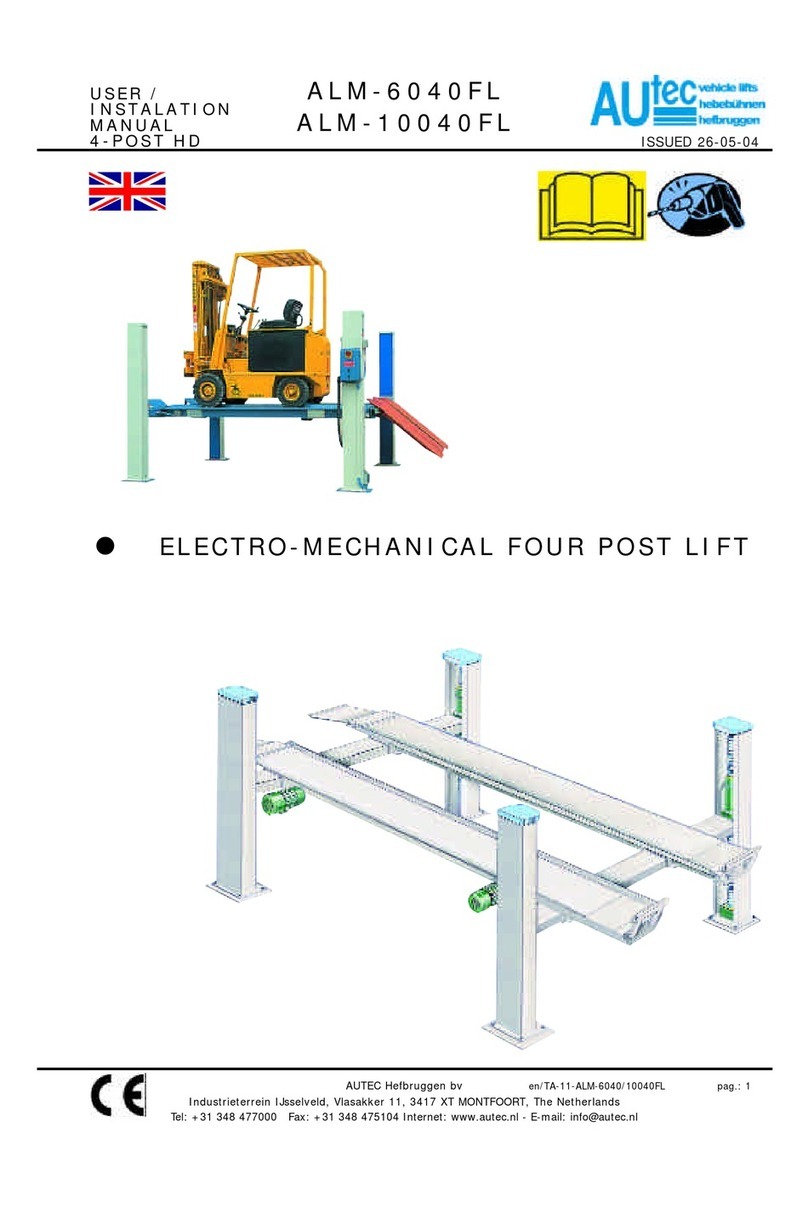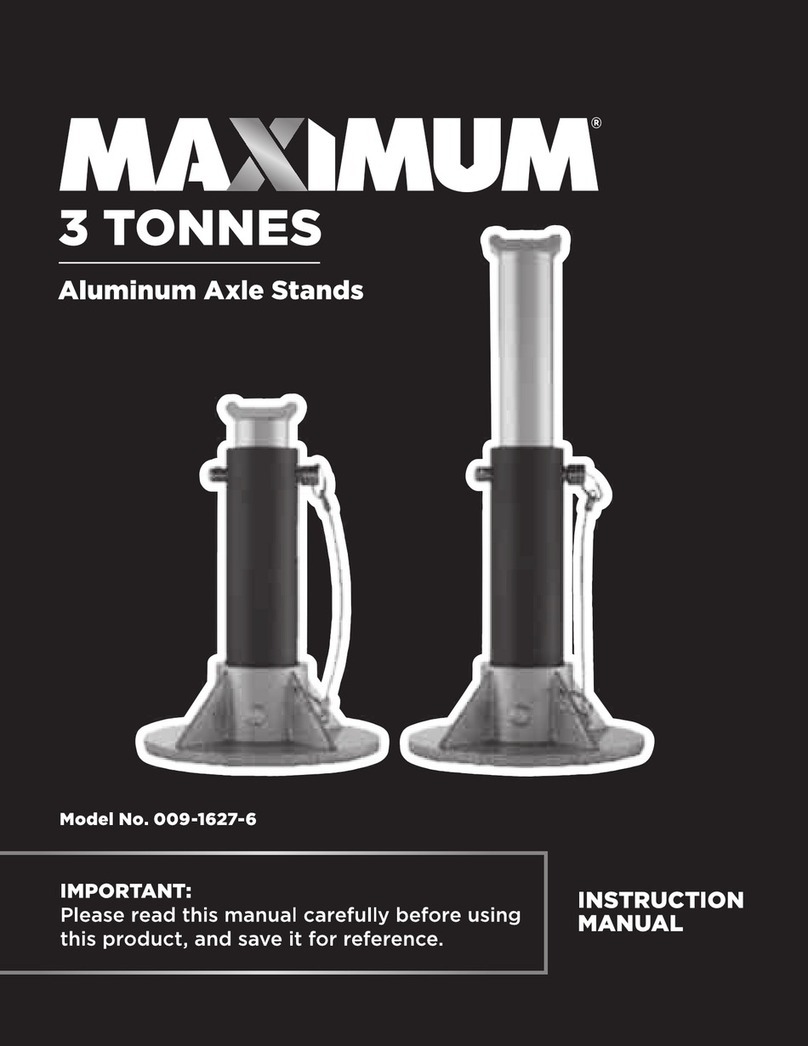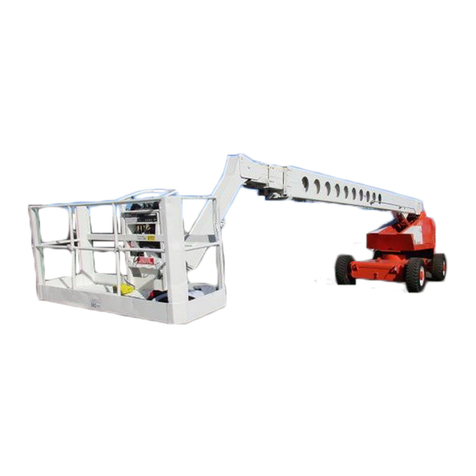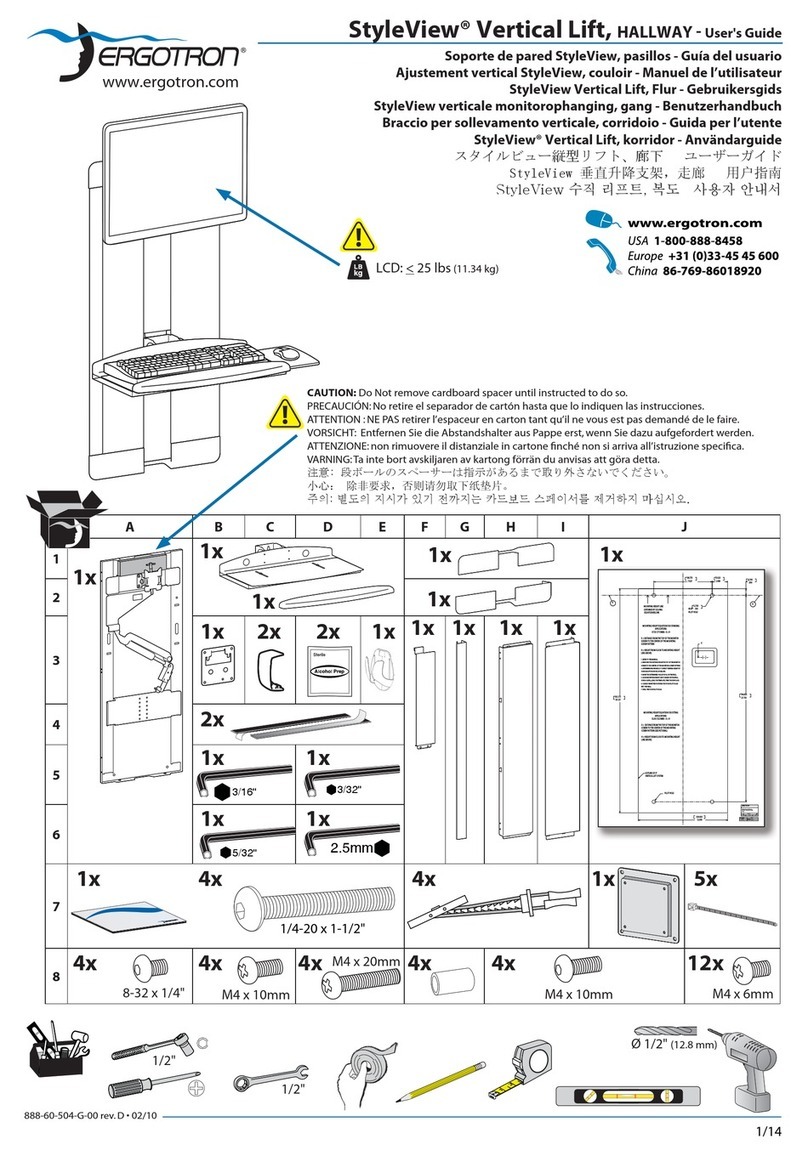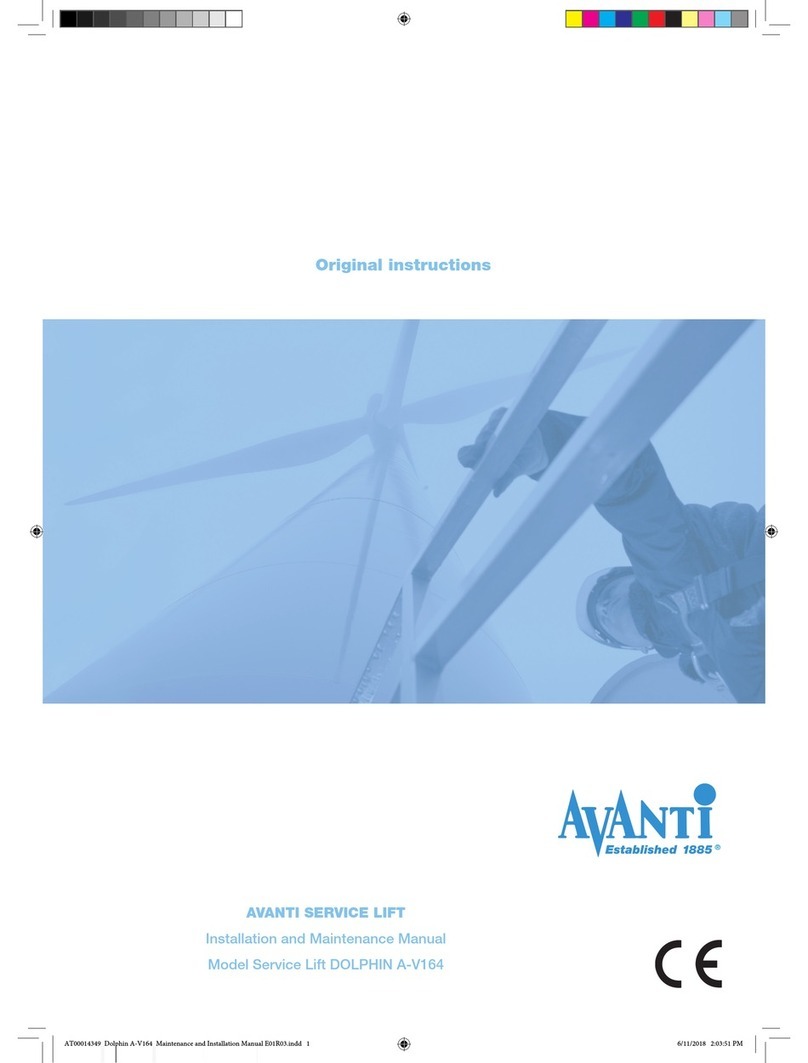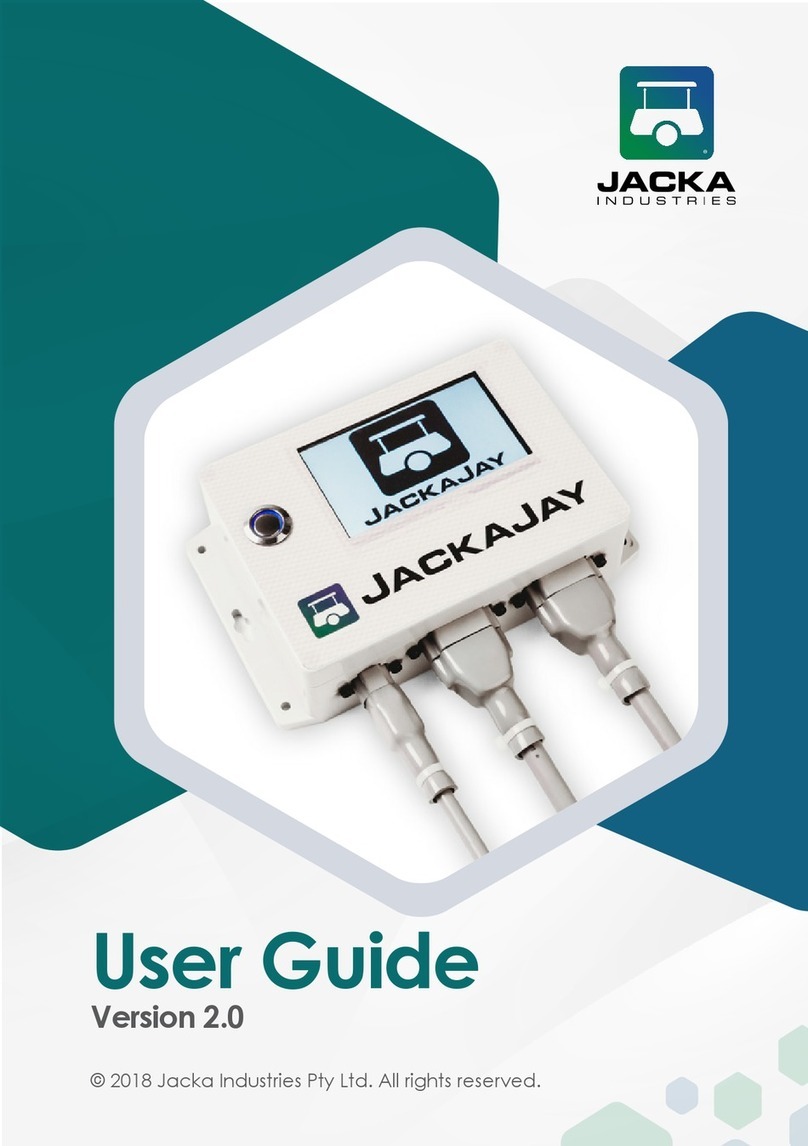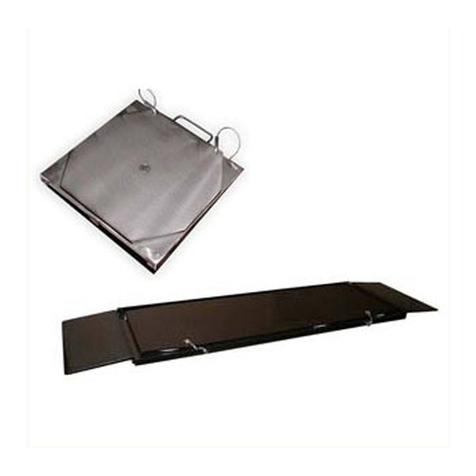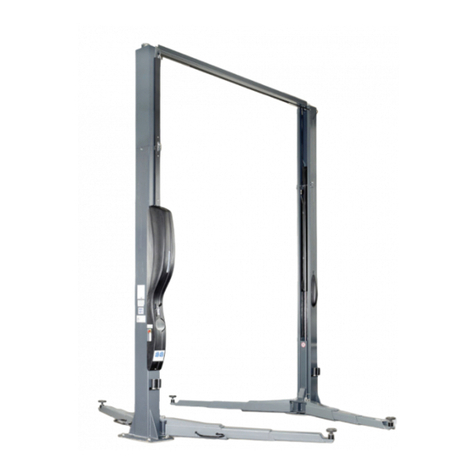VMB HDT-8 User manual

HDT-8
V 04.13
TOWERLIFT
OPERATING INSTRUCTIONS
TORRE ELEVEDORA
MANUAL DE INSTRUCCIONES
GB
E
USA

LIFTING TOWER HDT-8
TORRE ELEVADORA HDT-8
PRO LIFTS S.L.
Pol. Inglés, Nave 6
46181 Benisanó (Valencia)
+34 96 171 81 86
Manufacturer - Fabricante
Este manual de usuario y catálogo anexo de piezas de repuesto es propiedad de PRO LIFTS S.L.
Queda prohibida su reproducción total o parcial por cualquier medio de la tecnología actual permita.
Deposito legal y copyright 2012. Todos los derechos reservados.
MADE IN SPAIN (EU)
BGV-C1
BGG-912
EC Conformity Declaration pursuant to the EC Machinery
Directives 89/392/CE and 98/37/CE: Manual lifters
CERTIFICATIONS / CERTIFICACIONES

Depósito legal y copyright 2013. Todos los derechos reservados. 3
PRO LIFTS S.L.
X
ALS
N1
W
W
C
ILS
P
Q
R
V
H
S
N2
HDT - 8

Depósito legal y copyright 2013. Todos los derechos reservados. 4
PRO LIFTS S.L.
Quick operation guide ENGLISH
CONTENTS
1. Introduction.
2. Technical information.
3. Safety precautions.
4. User instructions.
5. Maintenance.
6. Guarantee.
1. INTRODUCTION
Dear customer, In order to ensure a safe
and reliable operation of the HDT-8 tower-
lift please follow the instructions in this
booklet carefully.
Before operating the lift, read the instruc-
tions completely and please note the te-
chnical information contained within this
manual.
All VMB products undergo very rigorous
testing, under strict conditions and they
are monitored continuously during the ma-
nufacturing process.
In order to guarantee the lifts function and
safety, only original parts from the manu-
facturer must be used. If any parts other
than those of the manufacturer are used,
or the product is modified in any way, the
user forfeits all warranty rights to claim.
VMB reserves the right to modify the pro-
duct specifications without prior notice.
The model type, production year and se-
rial number must be quoted in any queries
or orders for spare parts.
2. TECHNICAL INFORMATION
2.1 - Towerlift HDT-8.
2.2 - Designed to lift loads vertically to va-
rious heights to support lighting and sound
systems.
2.3 - Maximum load : 350 Kg (772 lb).
2.4 - Minimum load : 25 Kg (55 lb).
2.5 - Maximum height : 8.2 m (26.9’).
2.6 - Minimum height : 1.98 m (6.5’).
2.7 - Area of base : 2.11 x 2.57 m
(7’ x 8.4’).
2.8 - Unit weight :232 Kg (512 lb).
2.9 - Construction material : Main body in
extruded aluminium 6082-T6 profile. Base
and legs are made of steel profile accor-
ding to DIN2394. Catches and safety rack
of ST-37 steel.
2.10 - Exclusive ALS system ( Auto-Lock
Security ), pat. pen. 200501056.hed in sa-
tin polyester. The tower can be supplied
with natural aluminium finish or black (ver-
sion B).

Depósito legal y copyright 2013. Todos los derechos reservados. 5
PRO LIFTS S.L.
Quick operation guide ENGLISH
3. SAFETY PRECAUTIONS.
2.11 - Winch : 900/1000 Kg. of maximum
load with automatic brake to stop the load.
2.12 - Cable : Steel DIN 3060. Quality 180
Kg/mm2 twist resistant. Cable diameter :
6 mm.
2.13 - Adjustable stabilizing feet with ruber
non-slip supports.
2.14 - Safety catches to anchor the legs.
2.15 - Spirit level to adjust the tower ver-
tically.
2.16 - Base, legs, supports, forks are finis-
hed in satin polyester. The tower can be
supplied with natural aluminium finish or
black (version B).
2.17 - Swivel wheels to transport the lift
when folded.
3.1 - The HDT-08 is a machine designed to elevate
loads upwards in a vertical direction, It should NEVER
be used as a platform to elevate people.
3.2 - Only place the lift on hard, flat surfaces always
checking that it is in a vertical position by using the bub-
ble level indicator found on the base section. Adjust the
outrigger stabilisers (Q) by turning the cranks to level if
necessary. NEVER use wedges or other foreign objects
to balance the lift.
3.3 - The maximum load indicated on the characteristics
label and the instructions manual should not be excee-
ded.
3.4 - This lift should NEVER be used to elevate a load
that has not been properly checked. It is necessary to
verify that the load is correctly supported and centred
on the appropriate lift support so that the weight of the
load will only elevate in a vertical direction.

Depósito legal y copyright 2013. Todos los derechos reservados. 6
PRO LIFTS S.L.
Quick operation guide ENGLISH
3.5 - Check that the outriggers are placed and set-up
correctly with their safety pins inserted and locked.
3.6 - NEVER use the lift on a vehicle or any other mobile
surface.
3.7 - If there is a possibility of strong winds or gusts,
place the lift on the ground firmly and secure it with the
use of straps. NEVER attach a strap to a vehicle or any
other object that can possibly be moved.
3.8 - NEVER move the lift whilst it is carrying a load. It
is not advisable to carry out any type of horizontal mo-
vement even small positional adjustments.
3.9 - NEVER allow any team member below the load or
anybody else in the lifts operating zone.
3.10 - Take care with all obstacles above the lift and
its extension zone such as cornices, balconies, and
luminous signboards. It is very important to avoid the
presence of all types of cables below the extended lift.

Depósito legal y copyright 2013. Todos los derechos reservados. 7
PRO LIFTS S.L.
Quick operation guide ENGLISH
3.11 - Do not use stepladders on the lift or use it as a
support for them.
3.12 - Before using the lift, check the condition of the
cable. The cable should not contain broken threads or
show any signs of crushed/flattened areas. NEVER use
faulty cables, always change them if there is any dou-
bt. Only use steel cables reference: DIN 3060. Quality:
180KG/mm and torsion resistant.
3.13 - All sections must be lowered first, before trans-
portation.
3.14 - Do not grease or lubricate the winch’s breaking
mechanism. The brake disks have been greased with
a special heat and pressure resistant solution. Other
products should not be used to avoid negative effects
regarding the braking mechanism.
3.15 - The minimum load to avoid problems regarding
the breaking mechanism is 25Kg. Without this load the
brake will not work.
3.16 - NEVER take apart the crank of the winch when
the lift is carrying a load or extended.

Depósito legal y copyright 2013. Todos los derechos reservados. 8
PRO LIFTS S.L.
Quick operation guide ENGLISH
4. USER INSTRUCTIONS.
4.1 - Place the lift on a firm, flat surface in
the area it is to be used supported with its
transport wheels (T).
4.2 - Remove the outriggers from their
transport supports (S) and fully insert
them into their positions (V) checking that
they are fixed by the pins (R).
4.3 - Adjust the outrigger stabilisers (Q) by
turning the cranks to level the lift. Ensu-
re it is in a vertical position by using the
bubble level indicator found on the base
section. The bubble should be in the cen-
tre of the circle.
4.4 - Place the forks in a horizontal posi-
tion ready to take the load on them.
4.5 - THE MAXIMUM LOAD IS 350 Kg
(772 lb). The lift should NEVER be over-
loaded (over 350 Kg). Safety at work is
the most important element. Place the
load onto the lift using an adequate sup-
port according to the need, use so that
the weight of the load will only elevate in a
vertical direction.
4.6 - How to place the load: Always load
as close to the tower as possible.
The maximum load diminishes according
to the distance from the body of the tower
as illustrated in the diagram below, which
shows the load on the gravity centre with
distances to the lifting carriage at a maxi-
mum lifting.
CAUTION
When two towers are used to elevate a
bridge, down truss or many towers to ele-
vate a structure of any type, it is almost
impossible that two or more people co-or-
dinate the winches elevating or lowering
the loads, at exactly the same pace. At a
certain point each tower will be extended
to a height different to that of the others.
For this reason it is necessary that the
structure does not stretch and allows for
these differences.
3.17 - Only original replacement parts should be used.
ORIGINAL
50 cm / 19,69 in
60 cm / 23,62 in
350 kg / 772 lb
290 kg / 640 lb
40 cm / 15,75 in
30 cm / 11,81 in
230 kg / 507 lb
180 kg / 397 lb

Depósito legal y copyright 2013. Todos los derechos reservados. 9
PRO LIFTS S.L.
Quick operation guide ENGLISH
4.8 - Hold:
The tower can be left in any intermediate
position which would be necessary. Just
stop turning the handle of the winch and
leave it. The automatic brake of the winch
will block it and hold the load. Ensure that
the red ALS lock is in the last hole and
slightly release the winch handle anti-
clockwise. The ALS lock will take the pres-
sure of the load and release strain applied
on the cable.
4.9 - Lowering:
To bring the lift down you need to first turn
the winch handle slightly clockwise (N1)
and at the same time pull the red ALS lock
out. (Fig.7) This releases the blocking
systems. Then turn the handle anti cloc-
kwise (N2), whilst maintaining the ALS
lock pulled out until the profile has been
completely lowered. All red ALS locks
should be pulled out one by one whilst the
handle is turned anti clockwise and the
profiles are brought down, one by one. If
you release your finger from the ALS lock
it will automatically block. In this case, re-
peat the first operation by turning slightly
clockwise and then anti clockwise whilst
always pulling the red ALS lock out. It is
necessary to completely lower each profi-
le before starting to lower the next. If you
pull another red ALS lock without having
completely lowered the previous profile
the first profile will remain blocked by the
security system and you will not be able to
lower it later.
With a rigid fixation and if the level diffe-
rence is significant, the force generated
from the handle of the winch will deform
the structure and apply a lateral force to
the lifts causing them to break and block.
Security system ALS
The HDT-8 incorporates the patented
security system ALS (Automatic Lock
Security). This VMB red trigger system
automatically blocks the tower in the posi-
tion it is left in. Each section of lift has an
ALS that blocks the section in the unlikely
event of the cable breaking.
4.7 - Elevation:
Turn the winch crank clockwise (N1) to lift
the carriage a few centimeters. Release
the forks and place them in the working
position inserting the pins. Turn the crank
clockwise and the tower will lift. The ILS
and ALS enable the lift to rise and auto-
matically block the carriage and profiles
whilst rising ensuring that it will never fall.
The SRS (Sequence-RetainerSystem)
will also ensure that the profiles rise in
sequence, one after the other. Once the
system is elevated to its required height
gently turn the handle in a clockwise di-
rection. The security systems will ensu-
re that the load stays fixed and blocked.
The red ALS locks will be blocked. This
enables the cable to be without any force
and means it is only used for the elevation
and descent of the lift.

Depósito legal y copyright 2013. Todos los derechos reservados. 10
PRO LIFTS S.L.
Quick operation guide ENGLISH
If this happens, elevate the towerlift to the
locked position and free the lock so that
you can commence the descent again un-
til it is completely lowered. Finally, release
the carriage lock following the same prin-
ciple as before and lower fully.
4.10 - Transport:
For the transport of the tower is necessary
to fold the machine lowering every section
completely. Once the towerlift is comple-
tely folded, place the outriggers in their
transport compartment (X) and the lift is
ready to be transported.
5. MAINTENANCE.
5.1 - Regularly check the state of the ca-
ble. If the cable has broken threads, or if
it shows any signs of crushed/flattened
areas, it should be changed and replaced
immediately with a new one. Do not use
the lift if the cables are in bad condition.
Only use steel cables reference: DIN
3060 torsion resistant.
5.2 - The lift is supplied from the factory
completely greased. However, it is recom-
mended to periodically grease according
to use, the gearing, the axis bearings, the
spiral of the crank, and the sections.
REMEMBER: NEVER grease or lubricate
the breaking mechanism. It is not neces-
sary to grease the brake disks. The brake
disks have been greased with a special
heat and pressure resistant solution.
Other products should not be used to
avoid negative effects regarding the bra-
king mechanism.
5.3 - All lifts should undergo an annual
technical inspection carried out by an
authorized VMB dealer to check the cer-
tifications and general condition of all the
lift’s elements and security systems invol-
ved in the lift’s use.
5.4 - Only use original spare parts to gua-
rantee a continued security level. The
user loses all rights to warranty if any spa-
re parts other than originals are used or
carries out any modification or alteration
to the towerlift.
5.5 - To request a spare part please in-
dicate the corresponding code which can
be found in this manual together with the
lift’s serial number and year of manufac-
ture.
6. GUARANTEE.
The warranty period for this lift is 2 years
from the date of purchase.
PRO LIFTS S.L. promises, that from the
date of purchase and during the warranty
period to resolve any faults that may oc-
cur, produced through defect material or
fabrication. Damage caused by improper
use, product modification, third party ma-
nipulation or accidental fire are not cove-
red by this warranty.

Depósito legal y copyright 2013. Todos los derechos reservados. 11
PRO LIFTS S.L.
Manual de usuario ESPAÑOL
CONTENIDO
1. Introducción.
2. Información técnica.
3. Precauciones de seguridad.
4. Instrucciones de uso.
5. Mantenimiento.
6. Garantía.
1. INTRODUCCIÓN
Estimado cliente: Con el fin de garanti-
zar un funcionamiento seguro y fiable de
la torre elevadora HDT-8 por favor, siga
cuidadosamente las instrucciones de este
folleto.
Antes de manipular la torre elevadora,
lea las instrucciones completas y tenga
en cuenta la información técnica conte-
nida en este manual. Todos los produc-
tos de VMB se someten a pruebas muy
rigurosas, en condiciones estrictas y son
monitorizados continuamente durante el
proceso de fabricación. Con el fin de ga-
rantizar el correcto funcionamiento y se-
guridad de los elevadores, sólo deben ser
utilizadas piezas originales del fabricante.
Si se utilizan piezas que no sean las origi-
nales del fabricante, o el producto se mo-
difica de alguna manera, el usuario pierde
todos los derechos de garantía.
VMB se reserva el derecho de modificar
las especificaciones del producto sin pre-
vio aviso. El tipo de modelo, año de pro-
ducción y el número de serie debe ser
citado en cualquier consulta o pedido de
piezas de recambio.
2. INFORMACIÓN TÉCNICA
2.1 - Torre elevadora HDT-8.
2.2 - Diseñada para levantar sistemas de
iluminación y sonido en sentido vertical a
diferentes alturas.
2.3 - Carga máxima: 350 kg (772 lb).
2.4 - Carga mínima: 25 Kg (55 lb).
2,5 - Altura máxima: 8.2 m (26,9’).
2.6 - Altura mínima: 1,98 m (6,5’).
2.7 - Área de la base: 2,11 x 2,57 m (7’ x
8.4’).
2.8 - Peso de la torre: 232 kg (512 lb).
2.9 - Material de construcción: Cuerpo en
perfil de aluminio extruido 6082-T6. Base
y patas son de perfil de acero según nor-
ma DIN2394. Las capturas y la rejilla de
seguridad son de acero ST-37.
2.10 - Exclusivo sistema ALS (Auto-Lock
Security), Pat. pend. 200501056.
2.11 - Cabrestante: 900/1000 kg de carga
máxima con freno automático de reten-
ción de la carga.
2.12 - Cable: Acero DIN 3060. Calidad de
resistencia a la torsión 180 kg/mm2. Diá-
metro del cable: 6 mm.

Depósito legal y copyright 2013. Todos los derechos reservados. 12
PRO LIFTS S.L.
Manual de usuario ESPAÑOL
3. PRECAUCIONES DE SEGURIDAD
3.1 - La HDT-8 es una máquina diseñada para la ele-
vación de cargas en dirección vertical, NUNCA se debe
utilizar como plataforma elevadora de personas.
3.2 - Colocar el elevador sólo en superficies firmes y
planas, verificando que está en posición vertical, utili-
zando el indicador de nivel de burbuja que se encuen-
tra en la base. Ajuste los estabilizadores (Q) girando las
manivelas hasta nivelar, si es necesario. Nunca utilice
cuñas u otros objetos extraños para equilibrar el ele-
vador.
3.3 - La carga máxima indicada en la placa de caracte-
rísticas y en las instrucciones del manual nunca debe
ser excedida.
3.4 - Este elevador NUNCA debe utilizarse para ele-
var una carga que no ha sido correctamente revisada.
Es necesario verificar que la carga está correctamente
apoyada y centrada en el soporte de elevación apro-
piado para que el peso de la carga sólo actúe en una
dirección vertical.
2.13 - Patas estabilizadoras ajustables
con soportes de goma antideslizantes.
2.14 - Gatillos de seguridad para anclar
las patas.
2.15 - Nivel de burbuja para ajustar la ver-
ticalidad de la torre.
2.16 - Base, patas, soportes y horquillas
tienen un acabado en poliéster satinado.
La torre puede ser suministrada con aca-
bado natural de aluminio o negro (versión
B).
2.17 - Ruedas direccionales para el trans-
porte del elevador cuando está plegado.

Depósito legal y copyright 2013. Todos los derechos reservados. 13
PRO LIFTS S.L.
Manual de usuario ESPAÑOL
3.6 - NUNCA use el elevador sobre un vehículo o cual-
quier superficie móvil.
3.7 - Si existe la posibilidad de vientos fuertes o ráfa-
gas, coloque el elevador en el suelo con firmeza y fijelo
mediante tirantes tensores. Nunca fije un tirante a un
vehículo o cualquier otro objeto que se pueda mover.
3.8 - NUNCA mueva el elevador mientras esté carga-
do. No es aconsejable llevar a cabo cualquier tipo de
movimiento horizontal, ni tan sólo pequeños ajustes de
posición.
3.9 - NUNCA permita que ningún miembro del equipo o
cualquier otra persona se sitúe debajo de la carga en la
zona de operación de las torres elevadoras.
3.10 - Tenga cuidado con todos los obstáculos por
encima de la elevación y su zona de extensión, como
cornisas, balcones, letreros luminosos, etc. Es muy im-
portante evitar la presencia de todo tipo de cables por
debajo de la torre extendida.
3.5 - Comprobar que las patas estén situadas correcta-
mente, y fijadas con los gatillos de seguridad los cuales
deben estar introducidos y bloqueados.

Depósito legal y copyright 2013. Todos los derechos reservados. 14
PRO LIFTS S.L.
Manual de usuario ESPAÑOL
3.12 - Antes de utilizar el elevador, compruebe el es-
tado del cable. El cable no debe contener hilos rotos o
mostrar signos de áreas aplastadas/aplanadas. NUN-
CA use cables defectuosos, siempre debe cambiarlos
si hay alguna duda. Utilice solamente cable de acero
DIN 3060. Calidad: 180kg/mm y resistente a la torsión.
3.13 - Todas los tramos deben ser bajados antes del
transporte.
3.14 - No engrasar ni lubricar el mecanismo de freno
del cabrestante. Los discos de freno vienen engrasa-
dos con una solución especial resistente a la presión y
al calor. No deben utilizarse otros productos, para evitar
los efectos negativos sobre el mecanismo de frenado.
3.15 - La carga mínima para evitar problemas relacio-
nados con el mecanismo de rotura es 25 kg. Sin esta
carga mínima el freno no funcionará.
3.16 - NUNCA desmontar la manivela del cabrestante
cuando el elevador está soportando una carga o ex-
tendido.
3.11 - No usar escaleras encima del elevador ni utilizar-
lo como un apoyo para éstas.

Depósito legal y copyright 2013. Todos los derechos reservados. 15
PRO LIFTS S.L.
Manual de usuario ESPAÑOL
4. INSTRUCCIONES DE USO.
4.1 - Colocar el elevador sobre una su-
perficie firme y plana en la zona que se va
a utilizar sirviéndonos de sus ruedas de
transporte (T).
4.2 - Saque las patas de los soportes de
transporte (S) e insertarlas en sus posi-
ciones (V) comprobando que quedan su-
jetas por los gatillos (R).
4.3 - Ajuste los estabilizadores (Q) giran-
do las manivelas para nivelar el elevador.
Asegúrese de que está en una posición
vertical mediante el indicador de nivel de
burbuja (F) que se encuentra en la base.
La burbuja debe estar en el centro del cír-
culo.
4.4 - Coloque las horquillas en posición
horizontal listas para apoyar la carga so-
bre ellas.
4.5 - La carga máxima es 350 kg (772lb).
El elevador NUNCA debe ser sobrecarga-
do (más de 350 kg). La Seguridad en el
Trabajo es el elemento más importante.
Coloque la carga en el elevador mediante
un soporte adecuado según la necesidad,
de modo que el peso de la carga sólo ac-
túe en una dirección vertical.
4.6 - Cómo colocar la carga: Cargue
siempre tan cerca de la torre como sea
posible. La carga máxima disminuye al
aumentar la distancia hasta el cuerpo de
la torre, como se ilustra en el siguiente
diagrama, que muestra la carga al centro
de gravedad con distancias al carro en
máxima elevación.
PRECAUCIÓN
Cuando se utilizan dos torres para elevar
un puente, descender truss o varias torres
para elevar una estructura de cualquier
tipo, es casi imposible que dos o más
personas que coordinan los cabrestantes
elevando o bajando las cargas, exacta-
50 cm / 19,69 in
60 cm / 23,62 in
350 kg / 772 lb
290 kg / 640 lb
40 cm / 15,75 in
30 cm / 11,81 in
230 kg / 507 lb
180 kg / 397 lb
3.17 - Sólo deben ser utilizadas piezas de repuesto origi-
nales de VMB PRO LIFTS S.L.
ORIGINAL

Depósito legal y copyright 2013. Todos los derechos reservados. 16
PRO LIFTS S.L.
Manual de usuario ESPAÑOL
El SRS (Sistema de Retención Secuen-
cial) también asegurará que los perfiles
se eleven de modo secuencial, uno des-
pués del otro. Una vez que el sistema se
eleva a la altura requerida, girar suave-
mente la manivela en sentido anti-horario.
Los sistemas de seguridad se asegu-
rarán de que la carga se mantiene fijo y
bloqueada. Los gatillos ALS rojos se blo-
quearán. Esto permite que el cable per-
manecer sin ninguna fuerza de modo que
sólo se utiliza para la elevación y el des-
censo del elevador.
4.8 - EN ESPERA:
La torre puede dejarse en cualquier posi-
ción intermedia que sea requerida. Basta
dejar de girar la manivela del cabrestante
y listo. El freno automático del cabres-
tante lo bloqueará y mantendrá la carga.
Asegúrese de que el bloqueo del ALS rojo
esté en el último taladro y liberar ligera-
mente la palanca del cabrestante en sen-
tido anti-horario. El bloqueo ALS tomará
la presión de la carga y liberará al cable
de la tensión aplicada.
4.9 - DESCENSO:
Para descender la torre es necesario,
primero girar la palanca del cabrestante
ligeramente en sentido horario (N1) y al
mismo tiempo tirar de los ALS rojos para
desbloquear (G).
mente a la misma velocidad. En un mo-
mento determinado cada torre se eleva
a una altura diferente a la de las demás.
Por ello, es necesario que la estructura no
se estire y permita que estas diferencias.
Con una fijación rígida y si la diferencia de
nivel es importante, la fuerza generada a
partir de la manivela del cabrestante de-
formará la estructura y aplicará una fuer-
za lateral a los elevadores provocando su
bloqueo y ruptura.
Sistema de seguridad ALS
El HDT-8 incorpora el sistema de seguri-
dad patentado ALS (bloqueo automático
de seguridad). Este sistema VMB de gati-
llo rojo bloquea automáticamente la torre
en la posición que se deja. Cada tramo
de elevación tiene un ALS que bloquea
el tramo en el caso improbable de que el
cable rompa.
4.7 - ELEVACIÓN:
Gire la manivela del cabrestante en sen-
tido horario (N1) para levantar el carro
unos pocos centímetros. Suelte la horqui-
lla y colóquela en la posición de trabajo
insertando las clavijas de seguridad. Gire
la manivela en sentido horario y la torre
se elevará. El ILS y ALS permiten al ele-
vador subir y bloquear automáticamente
el carro y los tramos mientras sube, ase-
gurando que nunca se caerá.

Depósito legal y copyright 2013. Todos los derechos reservados. 17
PRO LIFTS S.L.
Manual de usuario ESPAÑOL
4.10 - TRANSPORTE:
Para el transporte de la torre es necesario
plegar la máquina bajando todos los tra-
mos completamente. Una vez que la torre
elevadora está completamente plegada,
colocar las patas estabilizadoras en su
compartimiento de transporte (X) y la to-
rre está lista para ser transportada.
5. MANTENIMIENTO
5.1 - Comprobar periódicamente el esta-
do del cable. Si el cable se hilos rotos, o
si muestra signos de zonas aplastadas/
aplanada, debe ser sustituido inmediata-
mente por uno nuevo. No use el elevador
si los cables están en mal estado. Utilice
solamente cable de acero DIN 3060 resis-
tente a la torsión.
5.2 - La torre elevadora es suministrada
de fábrica completamente engrasada.
Sin embargo, se recomienda un engrase
periódico, según el uso, de las ruedas de
fricción, los cojinetes de eje, la espiral de
la manivela, y los tramos.
RECUERDE: NUNCA engrasar ni lubricar
el mecanismo de freno. No es necesario
engrasar los discos de freno.
Los discos de freno vienen engrasados
con una solución especial resistente a
la presión y al calor. No deben utilizarse
otros productos, para evitar los efectos
(Fig. 7) Esto libera los sistemas de blo-
queo. A continuación, gire la manivela en
sentido anti-horario (N2), mientras des-
cienden los tramos tirar de los ALS para
desbloquear hasta que los tramos han
sido completamente bajados. Todos los
gatillos rojos ALS deben ser desbloquea-
dos uno a uno mientras giramos la mani-
vela en sentido anti-horario y los perfiles
bajan, uno a uno.
Si se quita el dedo del ALS se bloqueará
automáticamente. En este caso, repita la
primera operación girando ligeramente la
manivela en sentido horario y después
siga en sentido anti-horario, mantenga
al tiempo los ALS rojos desbloqueados.
Es necesario para bajar completamente
cada tramo antes de empezar a bajar el
siguiente. Si tira de otro ALS rojo sin ha-
ber bajado completamente el tramo ante-
rior, el primer perfil permanecerá bloquea-
do por el sistema de seguridad y usted no
podrá bajarlo más tarde.
Si esto sucede, elevar la torre hasta la po-
sición de bloqueo y libere el gatillo ALS de
modo que pueda comenzar el descenso
de nuevo hasta que esté completamente
bajada. Por último, suelte el bloqueo del
carro siguiendo el mismo principio que
antes y bajar completamente.

Depósito legal y copyright 2013. Todos los derechos reservados. 18
PRO LIFTS S.L.
Manual de usuario ESPAÑOL
rial defectuoso o fabricación. Los daños
causados por un uso inadecuado, modi-
ficación del producto, la manipulación de
terceros o incendio accidental no están
cubiertos por esta garantía.
negativos sobre el mecanismo de frena-
do.5.3 - Todos los elevadores deben so-
meterse a una inspección técnica anual
llevada a cabo por un distribuidor autori-
zado VMB para comprobar las certifica-
ciones y el estado general de todos los
elementos de elevación y sistemas de
seguridad que intervienen en el uso del
elevador.
5.4 - Utilice únicamente piezas de repues-
to originales para garantizar el nivel de
seguridad de forma continuada. El usua-
rio pierde todos los derechos de garantía
si las piezas de repuesto utilizadas no son
originales o se utilizan o se lleva a cabo
cualquier modificación o alteración de la
torre elevadora.
5.5 - Para solicitar una pieza de recam-
bio indique el código correspondiente que
se encuentra en este manual junto con el
número de serie de la torre y el año de
fabricación.
6. GARANTÍA
El período de garantía para este elevador
es de 2 años a partir de la fecha de com-
pra.
PRO LIFTS S.L. se compromete, que a
partir de la fecha de compra y durante el
período de garantía, a resolver los fallos
que puedan producirse, debidos a mate-

Depósito legal y copyright 2013. Todos los derechos reservados. 19
PRO LIFTS S.L.
Spare parts sketches

Depósito legal y copyright 2013. Todos los derechos reservados. 20
PRO LIFTS S.L.
HDT - 8
A
8018 8018
7209
2160DM
4019
4005
3031
4020
3040
8001
8001
2026C
4014
4011
6409
7209D
B
C
D
3032
3034
3228
3033
Other manuals for HDT-8
1
Table of contents
Languages:
Other VMB Lifting System manuals
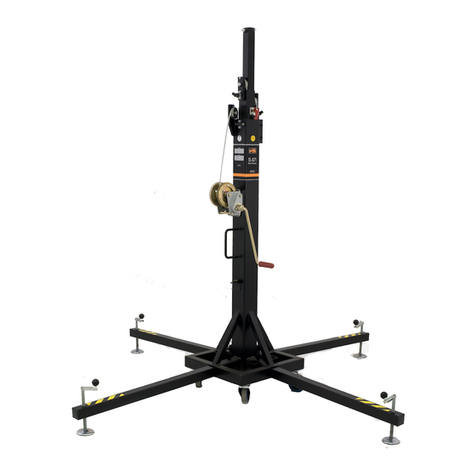
VMB
VMB TE-071 Instruction Manual

VMB
VMB TL-075 Instruction Manual
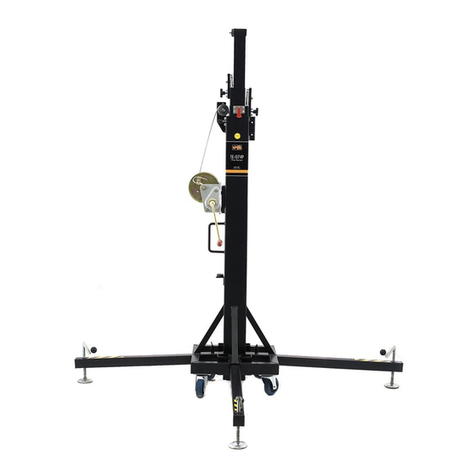
VMB
VMB TE-074 PRO User manual

VMB
VMB TL-A220 User manual
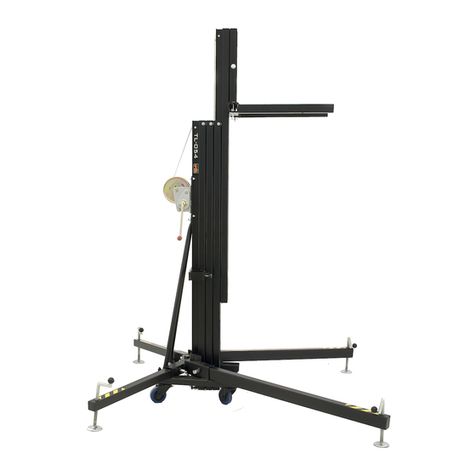
VMB
VMB TL-054 Instruction Manual
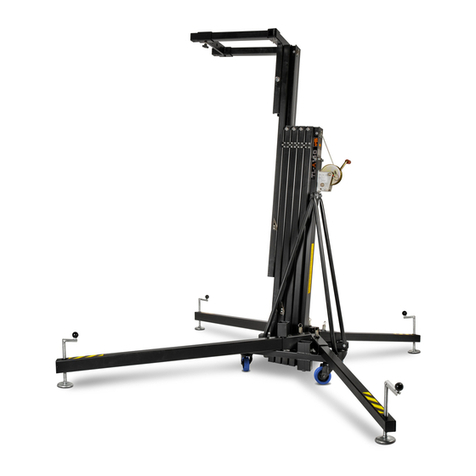
VMB
VMB TL-A150 Instruction Manual
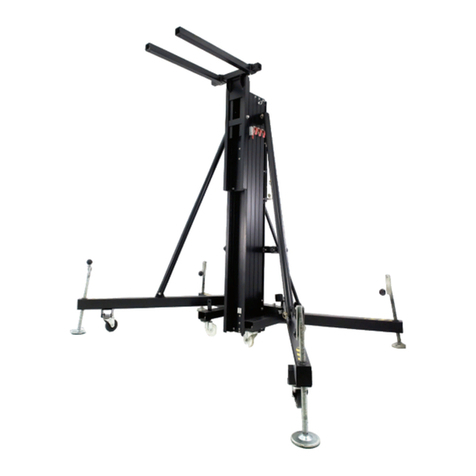
VMB
VMB TL-A450 Instruction Manual

VMB
VMB TL-A150 User manual
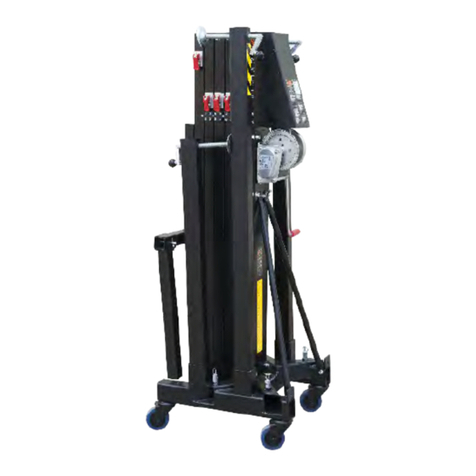
VMB
VMB Pro Lifts TL-063 Instruction Manual
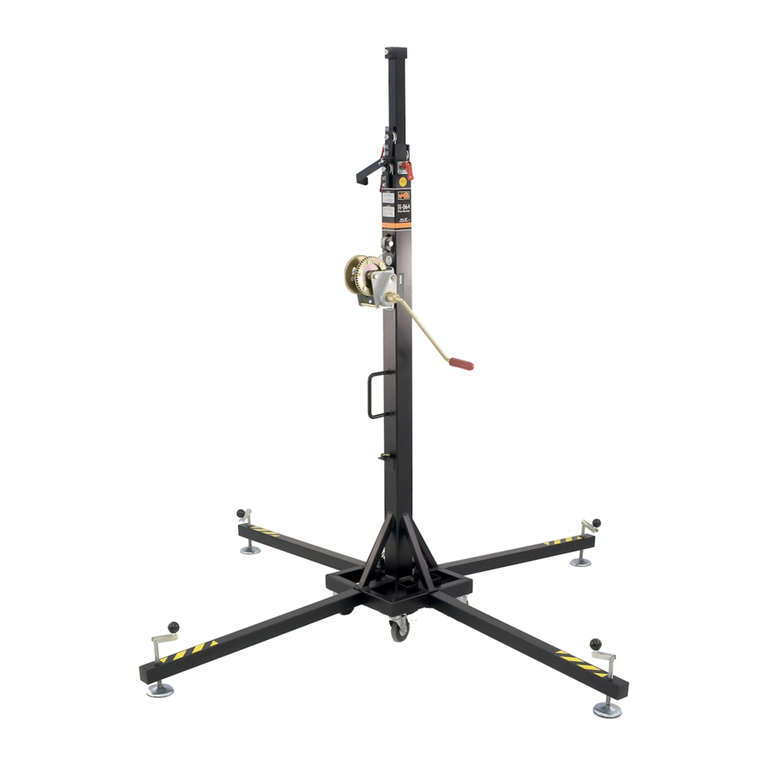
VMB
VMB TE-064 User manual
